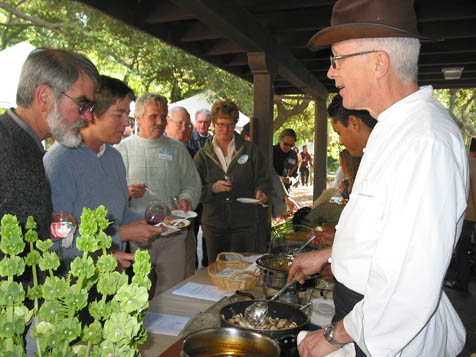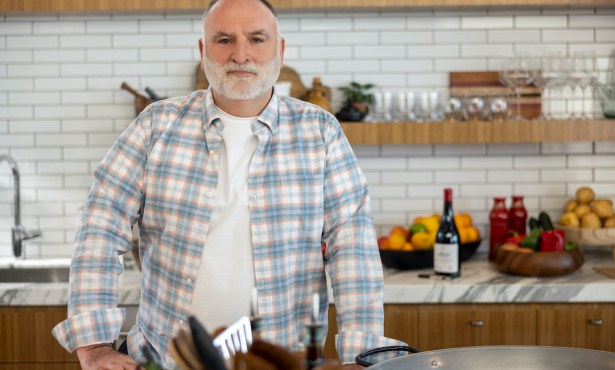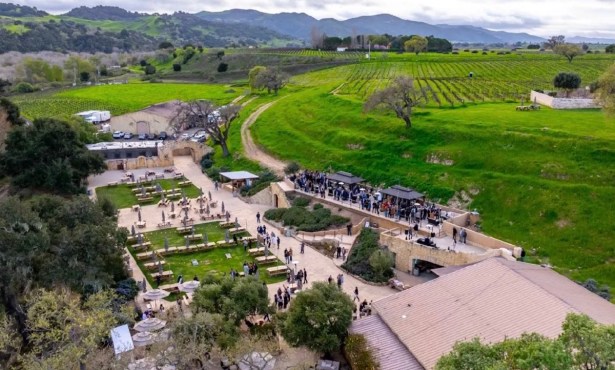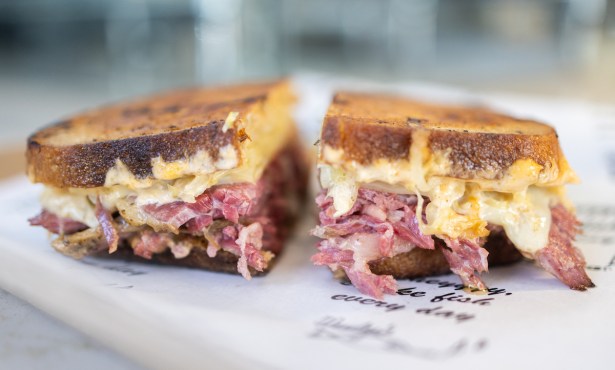The 20th Annual Santa Barbara Wine Festival
Chef Michael Hutchings Finds the Natural Connections between Food and Wine

Chef Michael Hutchings, a Santa Barbara culinary legend, owned the acclaimed Michael’s Waterside from 1983 to 1993. But that’s just part of his story, which is filled with work in kitchens from Paris to Disneyland (the exclusive Club 33). Hutchings is also on the board of the Santa Barbara Museum of Natural History’s History of Food series, so it’s of little surprise amid the 20th Annual Santa Barbara Wine Festival that he will be offering up food and a cooking demo.
Have you worked with the Santa Barbara Wine Festival before? I did the original series for 15 years; it started back in the early ’80s. I do a lot of charitable events throughout the year, but this one has always had a certain panache about it. The setting is a very beautiful, very Santa Barbara setting. This year there are a phenomenal number of wineries participating; the number is mind-boggling-more than 60 wineries. I remember when I first started in 1981, I don’t think there were six wineries in the valley-Firestone and the Sanfords were just getting started, the early pioneers-and now, my god, there are 60.
You sold Michael’s Waterside in 1993, but it seems since then that Santa Barbara has really made its name in the wine world. Any thoughts about that growth? I think it parallels the explosion of the wine world in California. It wasn’t until the late ’60s or early ’70s that people started to realize you don’t have to be in Burgundy or the Rh’ne Valley to make a great wine. It started with people like Robert Mondavi reawakening people’s ideas, Joseph Heitz, and those tasting in Paris when they realized California makes world-class wines. It just snowballs; the people who used to grow grapes now have wineries. The technology of wine has become more of a science than an art. There are a lot of good grapes and a lot of good wines produced. That’s the fun part-you can just pop over to the valley and taste these world-class wines grown right there. It’s only going to get better.
What will your cooking demos be like at the festival? I’m going to be preparing a salmon dish with red wine sauce, one of my favorite juxtapositions because people have that old myth that red wine and fish are not compatible. Salmon is a very rich fish that will stand up really nicely to a reduction made from pinot noir. What I will be demonstrating is how you take a whole salmon and reduce it down to escalopes, make a sauce, cook it, and people will have a chance to try it there.
You would then, of course, suggest drinking a red wine with the recipe. Exactly. There’s an old recipe for salmon done with a chinon [a cabernet franc-based wine from the Loire Valley] that is in the classic repertoire, so it’s not what you could call a pioneer dish.
So how do you conceive of food and wine parings in general? I look at wine a little differently. You talk to a winemaker and all of a sudden you have burnt raspberries and old leather and other descriptors coming out. I taste wine almost in terms of having a food. What is this like, what is the acid balance, what are the overtones, what’s going to go with it that doesn’t overwhelm it, but that marries nicely with the flavors? It’s like when I’m making the sauce with the wine: The sauce has a base, the sauce has aromatics, the sauce has an acid. And any good sauce is a balance of those three elements.
For instance, the sauce I’m going to be making, the base is going to be of veal stock and fish stock. The aromatics are going to come from the herbs I put into it, like thyme and bay leaves, and some of the aromatics come from the wine. The wine adds that acid structure and balance and the art of the sauce is putting the elements in some kind of harmonious relationship-and then bringing the element of the fish into that, the marrying of flavors. It’s a fairly complex sauce; there are a lot of different layers and overtones.
So, that’s how I approach developing a dish with wine. I don’t go to extremes and say this absolutely has to have a pinot noir; this salmon would also do very well with a light merlot. I wouldn’t put the dish with a really light Beaujolais style, for instance, or a rose just because it would not balance. In the end, people will drink what they want. The point is to enjoy it.
Tell me about the difference between cooking to teach and cooking as a chef. I gear [my cooking] to who the audience might be. Sometimes it’s more about entertainment, so you don’t get too technical or pedantic; but, if you’re doing it for people who are really interested in cooking and really want to recreate that dish, all the steps have to be shown. I’ve done demos for 200 at the Ahwahnee [Hotel in Yosemite] where I know very few of those people will go home and cook [the dish], so you want to do a dish that has a little flash and bang. I like to do things that you won’t even see on the Food Network. I’ll go in with a whole saddle of veal-this is how you butcher it; or I’ll bring a whole fish-this is how you filet a whole fish. There are a lot of chefs who don’t know how to do that. People get a sense of the process. Cooking is not hard: It’s a lot of easy steps strung together in the right order, but there’s timing-another minute of a scallop in a pan and it’s rubber. I like to show people the nuts-and-bolts stuff; really, how I learned how to cook. So when they walk away they can at least give it a try.
4•1•1
The 20th Annual Santa Barbara Wine Festival is on Saturday, June 30, from 2-5 p.m. at the Santa Barbara Museum of Natural History (2559 Puesta del Sol Rd.). Cost is $50 for members and $75 for nonmembers, and proceeds benefit the museum’s programs and exhibits. Guests must be at least 21 years old; proper ID required on site. For tickets, call 682-4711 x443, email mmoore@sbnature2.org, or visit sbnature.org.



